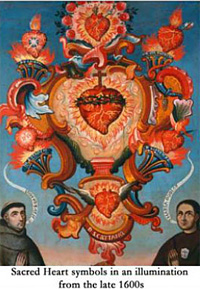
|
| Date | Pedigree | O/R alignment | Shape | Planchet | Top detail | Other |
| 1704Y | Vidal-Quadras; Dasí; Yriarte | ↑↑ | round/balanced/perfect | wide | no flames | superb |
| 1704Y | Renaissance 12/00 | ↑↑ | not very round/balanced | wide | no flames | |
| 1704Y | Lázaro #320; Sedwick 2nd ed; private collection | ↑↖ | round/balanced | wide | no flames | doubling, no hole |
| 1704Y | Calicó cover; Sedwick 11/13 | ↑↑ | round/balanced | wide | no flames | |
| 1706Y | Cayón 2011 | ↑↗ | teardrop/balanced | normal | no flames | doubling, plugged |
| 1706Y | Christensen 1981; Renaissance 12/00; private collection | ↑↑ | round/balanced | wide | no flames | notch in planchet |
| 1706Y | Lázaro # 321 | ↑↑ | triangular | normal | no flames | no hole |
| 1706Y | Lázaro # 322 | ↑↑ | round/balanced | wide | no flames | choice |
| 1708Y | Medina; Yriarte; Dasí; Burzio | ↑↑ | teardrop/balanced | normal | no flames | |
| 1708Y | Lázaro # 323 | ↑↗ | oval/balanced | small | no flames | doubling |
| 1708Y | Lázaro # 323A | ↑↑ | teardrop/balanced | normal | no flames | |
| 1709Y | Almazar; Renaissance 12/00; Jeus Vico 3/03 | ↑↑ | teardrop/balanced | normal | flames | |
| 1709Y | Lázaro # 324 | ↑↑ | round/balanced | wide | no flames | |
| 1710Y | Stack's Bowers Ponterio (1/14) | ↑↑ | teardrop/balanced | normal | no flames | gilded |
| 1710Y | Ponterio (Karon) 3/90 | ↑↑ | teardrop/balanced | normal | no flames | |
| 1711Y | Louis Hudson 1986 | ? | ? | ? | ? | ? |
| 1715Y | Lázaro #325; Ponterio 6/93 | ↑↗ | mushroom shape | wide | no flames | rough |
| 1716Y | Karon (private sale); Cayón 1991; Sedwick 05/14 | ↑↑ | round/balanced | wide | flames | |
| 1716Y | Lázaro #326; Yriarte | ↑↑ | turnip shape | normal | no flames | doubling |
| 1721Y | Renaissance 12/00 | ↑↑ | round/balanced | wide | no flames | |
| 1721Y | Lázaro #327 | ↑↗ | round/balanced | wide | no flames | |
| 1722Y | Lázaro #327A | ↑↑ | round/balanced | wide | flames | |
| 1726Y | Almanzar 3/73; Kagin's 1983; Sedwick 4th ed cover; Calicó Trigo 1985; private collection | ↓↑ | round/balanced | wide | flames | Louis I |
| 1726Y | Lázaro #331 | ↖↗ | teardrop/balanced | normal | flames | Louis I |
| 1729M | Christensen 6/77, 10/81 | ↑↓ | round/balanced | normal | flames | |
| 1729M | Ponterio 1/02; Goldberg 5/07 | ↖↑ | chunky | small | no flames | |
| 1729M | Almanzar 11/81; Jovel | ←↑ | teardrop/balanced | normal | no flames | Guatemala Type I countermark (1838) |
| 1729M | Lázaro #329; Dasí; Burzio | ←↑ | round/balanced | wide | flames | |
| 1734E | Freeman Craig 12/77; Peña collection | ↑↑ | chunky | small | no hole | |
| 1734E | Ponterio (Karon) 3/90; Cayón 2/12; Herrero 5/12 | ↑↑ | chunky | small | no flames | |
| 1734E | Lázaro #330 | ↑↑ | round/balanced | wide | flames | choice |
| 1734E | Cayón 2005 | ↑↑ | chunky | small | flames | |
| 1737E | Lázaro #331A | ↑↑ | chunky | small | flames | last date |
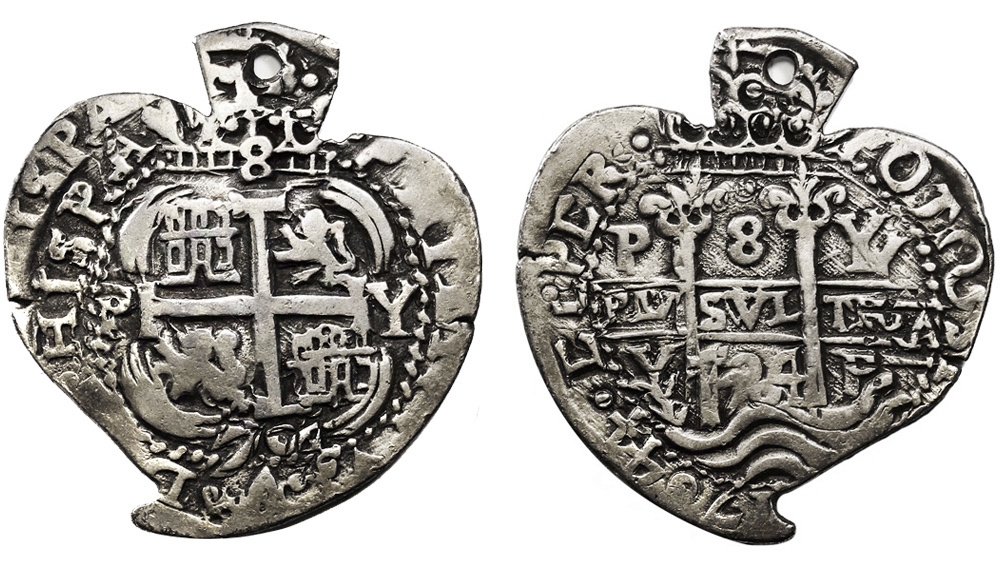
Potosí, Bolivia, cob 8 reales Heart, 1704Y, rare, Calicó cover coin (dust jacket), 27.11 grams.
Sold for $56,400 in Sedwick Auction #14, October , 2013.
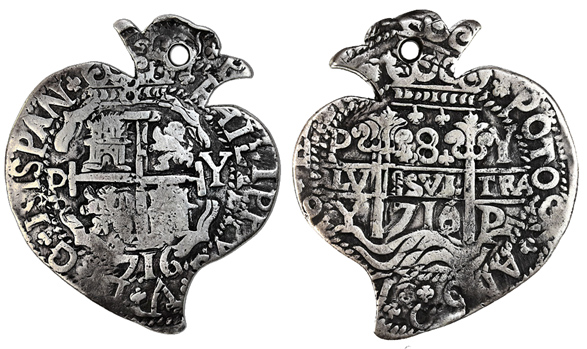
Potosí, Bolivia, cob 8 reales Heart, 1716Y, 26.56 grams.
Sedwick Auction #15, May, 2014.

Cover of The Practical Book of Cobs, 4th edition (2007), showing a
Potosí, Bolivia, cob 8 reales Heart, Louis I, 1726Y.
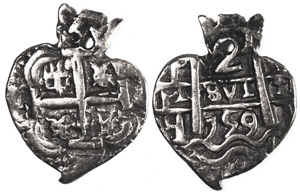
Potosí, Bolivia, cob 2 reales Heart, 1759q, 4.9 grams, last known date of Hearts.
Sold for $11,250 in Sedwick Auction #10, October 26, 2011.
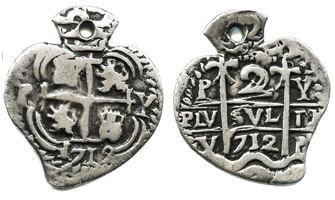
Potosí, Bolivia, cob 2 reales Heart, 6.1 grams, 1712Y.
Sold for $6,500 in Sedwick Auction #9, April 27, 2011.
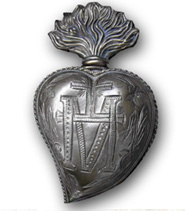
Antique ex voto (Catholic “Sacred Heart” symbol).
_________________________________________
Almanzar, Aureo, Cayón, Christensen, Freeman Craig, Ira and Larry Goldberg, Kagin's, Herrero, Ponterio (Stack’s Bowers Ponterio), Renaissance, Sedwick, Vico.Special acknowledgements for the May 2014 update : Augi Garcia, Carlos Jara and Kent Ponterio (also notes from the late Louis Hudson).
References cited:
Burzio, Humberto. La ceca de la Villa Imperial de Potosí y la moneda colonial (1945).
Calicó, Xavier. Numismática española (2008).
Dasí, Tomas. Estudio de los Reales de a Ocho, 5 volumes (1950-1).
Janson, Hector Carlos. La moneda circulante en el territorio Argentino, 1574-2010 (2011).
Jovel, Roberto. Las monedas de necesidad de Guatemala, siglos XVII a XIX (2001).
Lázaro, José Luis. Los redondos de Lima, Méjico y Potosí y otras acuñaciones especiales (1996).
Medina, José Toribio. Las monedas coloniales hispano-Americanas (1909).
Vidal-Quadras y Ramón, Manuel. Catálogo de la colección de monedas y medallas de Manuel Vidal Quadras y
Ramón de Barcelona, 4 volumes (1892).
Yriarte Oliva, Jose de and Leopoldo López-Chaves Sánchez. Catálogo de los reales de a ocho españoles, (2nd ed, 1965).
Auction companies cited (note these are the ONLY modern auction companies ever to offer 8R Hearts):
Original article by Daniel Frank Sedwick (July 8, 1991), first published in PLVS VLTRA newsletter.
_________________________________________
-Reproduction of this article in whole or in part is strictly prohibited without written permission of the author/s.
![]()
![]()
Daniel Frank Sedwick, LLC
P.O. BOX 1964 | Winter Park, Florida 32790
Phone: 407.975.3325 | Fax: 407.975.3327
We welcome your order, want lists, comments, material for sale or consignment and suggestions.
Please send email to: office@sedwickcoins.com


